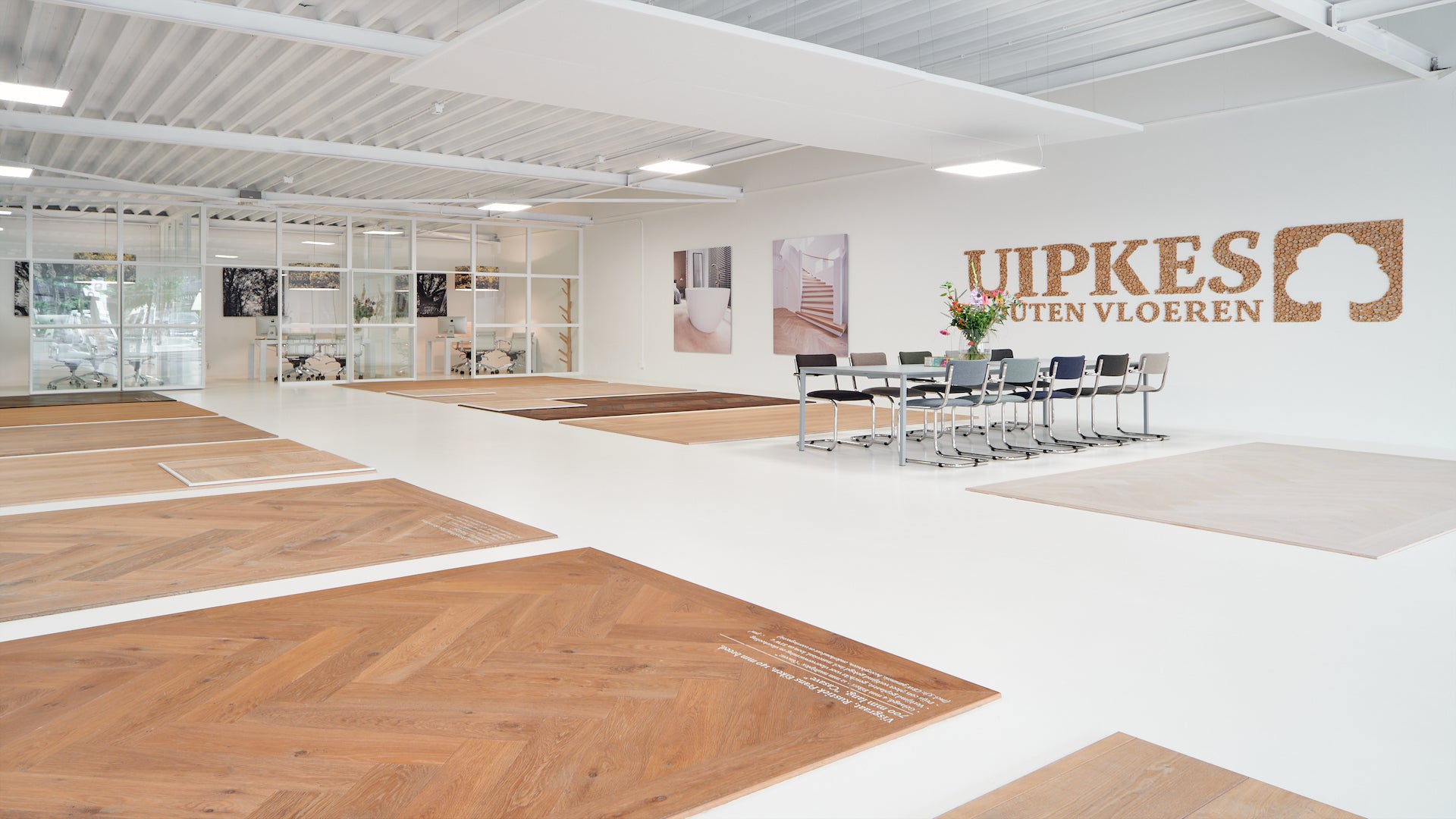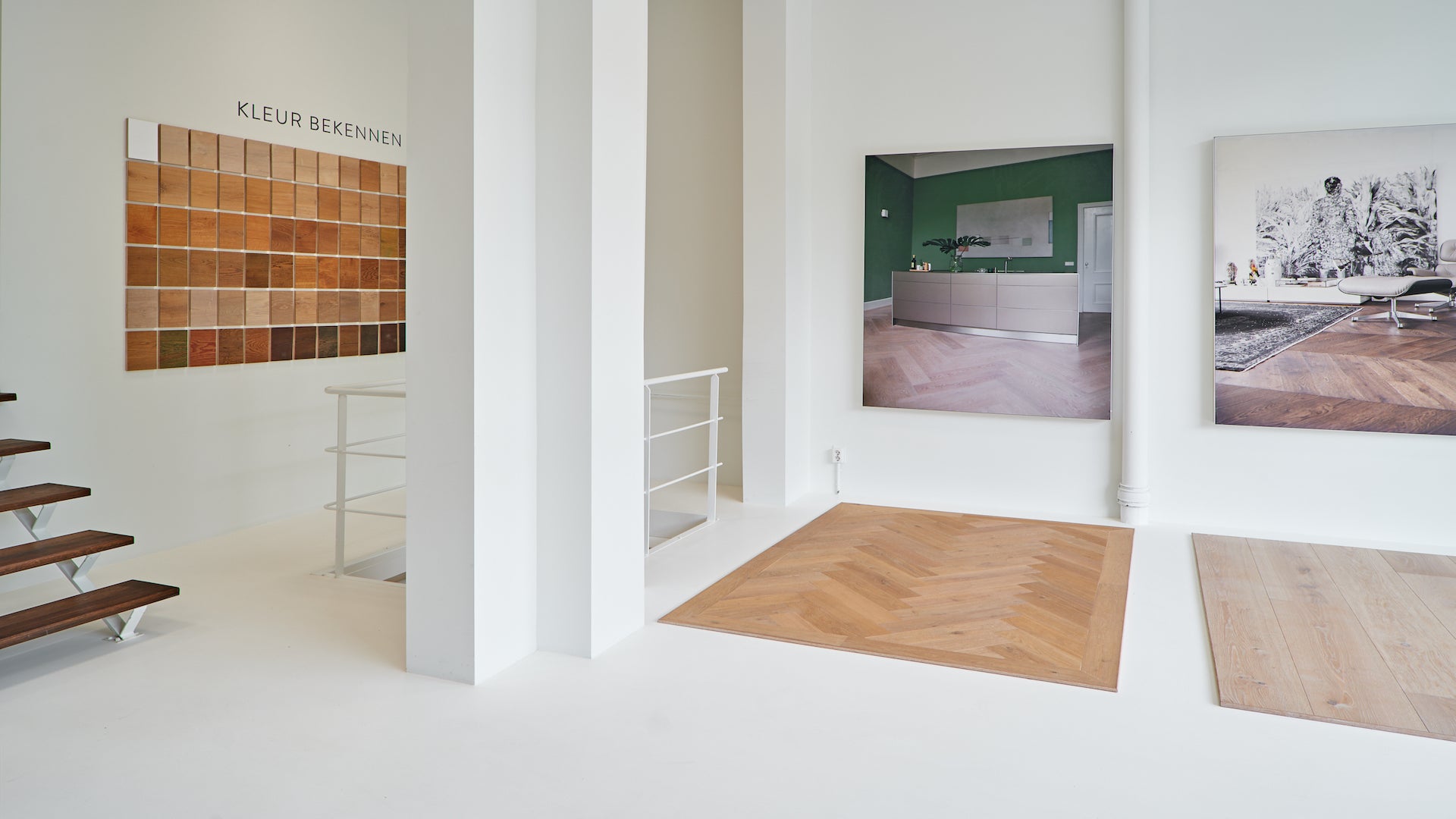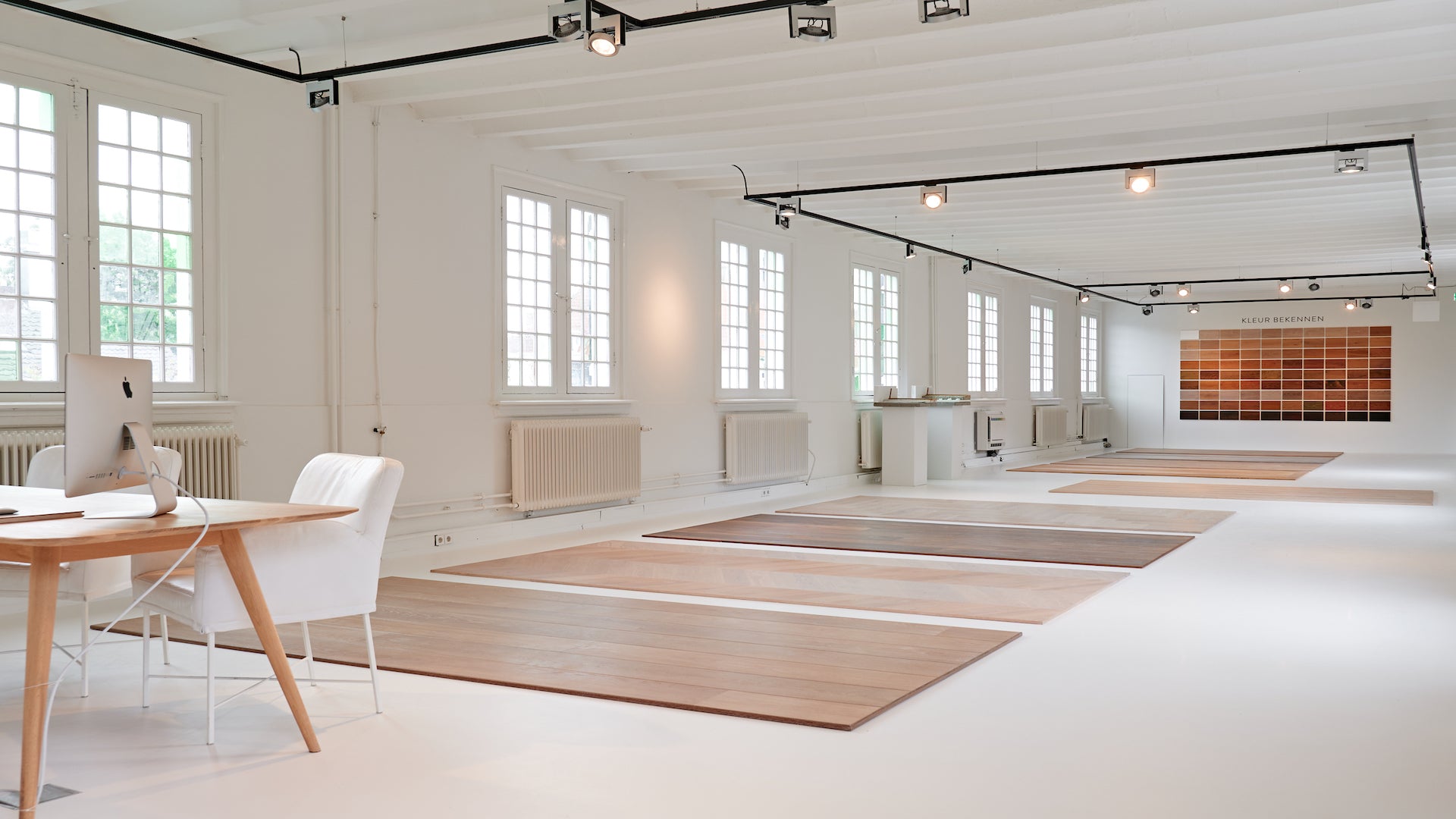Vloerverwarming in een nieuwe dekvloer
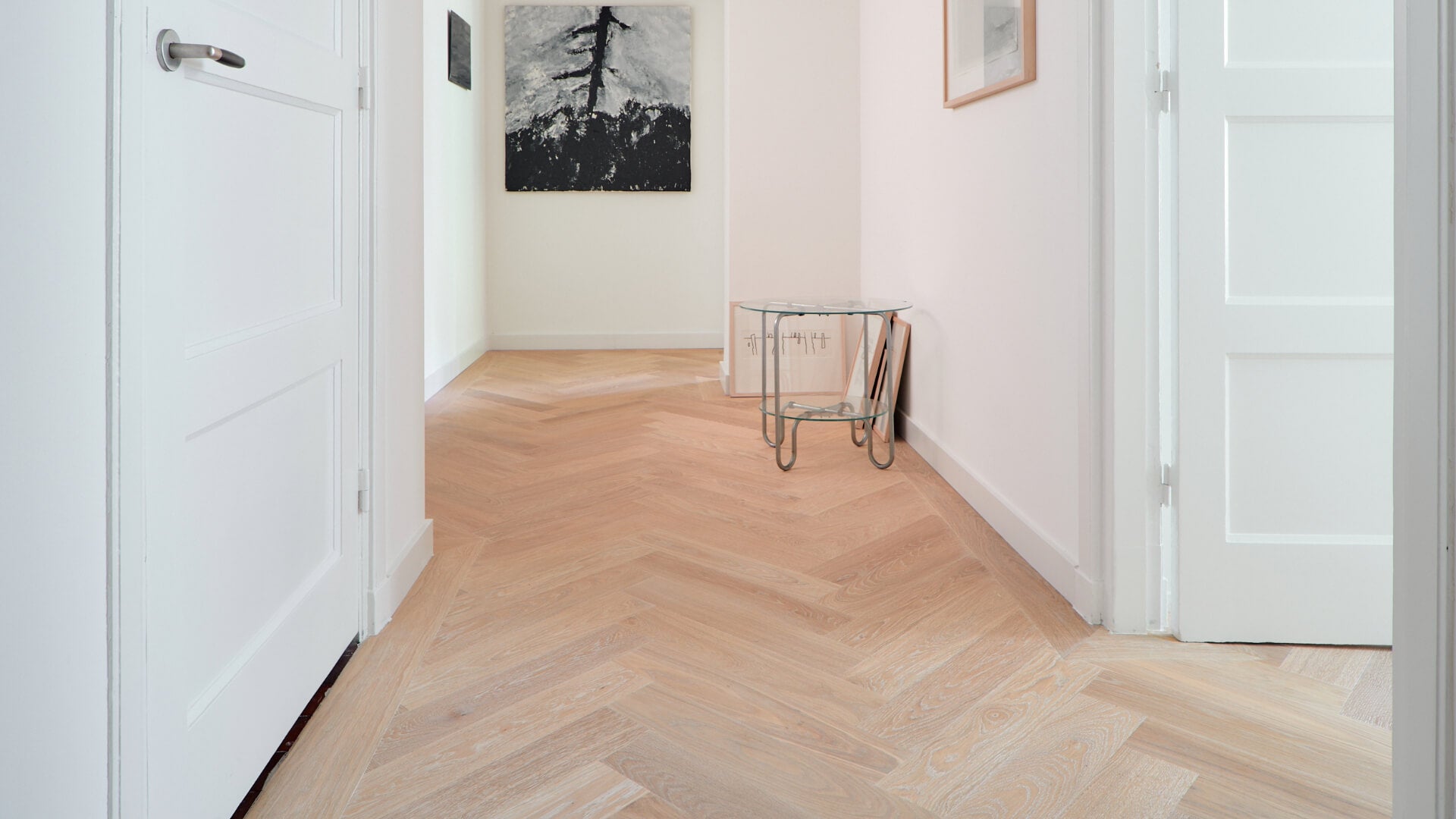
Bezoek de showroom
We can help you with the entire process during a renovation. With more than 20 years of experience in wooden floors on underfloor heating , we have a lot of knowledge. This way we can install underfloor heating and pour a new sand-cement screed over it. We can also take care of the removal of the existing floor for you. We also offer the installation of underfloor heating in a new screed floor as a separate service.
Sand-cement screed floor with underfloor heating
At Uipkes it is possible to pour a new sand-cement screed with underfloor heating . Over the years, Uipkes wooden floors has experience in providing a new screed floor in collaboration with renowned parties. A new screed floor is made when the old (often wooden) screed floor is no longer good and safe to provide a certain strength to the construction, or when an extension is built. This can also be chosen if the beam layer is no longer suitable.
With the work we assume that the foundation has been prepared. Floor insulation plates (tacker plates) are placed on the foundation to prevent heat loss from the pipes downwards. A metal grid is placed on the plates to which the underfloor heating pipes with a thickness of 16 mm are attached. The pipes are connected to the distribution station. The pipes are placed in a hairpin or snail shell shape. The hairpin shape is often used in rooms with large windows, because the pipes can then be placed close to the window frame. For main heating, a distance of 10 or 12.5 cm from center to center is desirable.
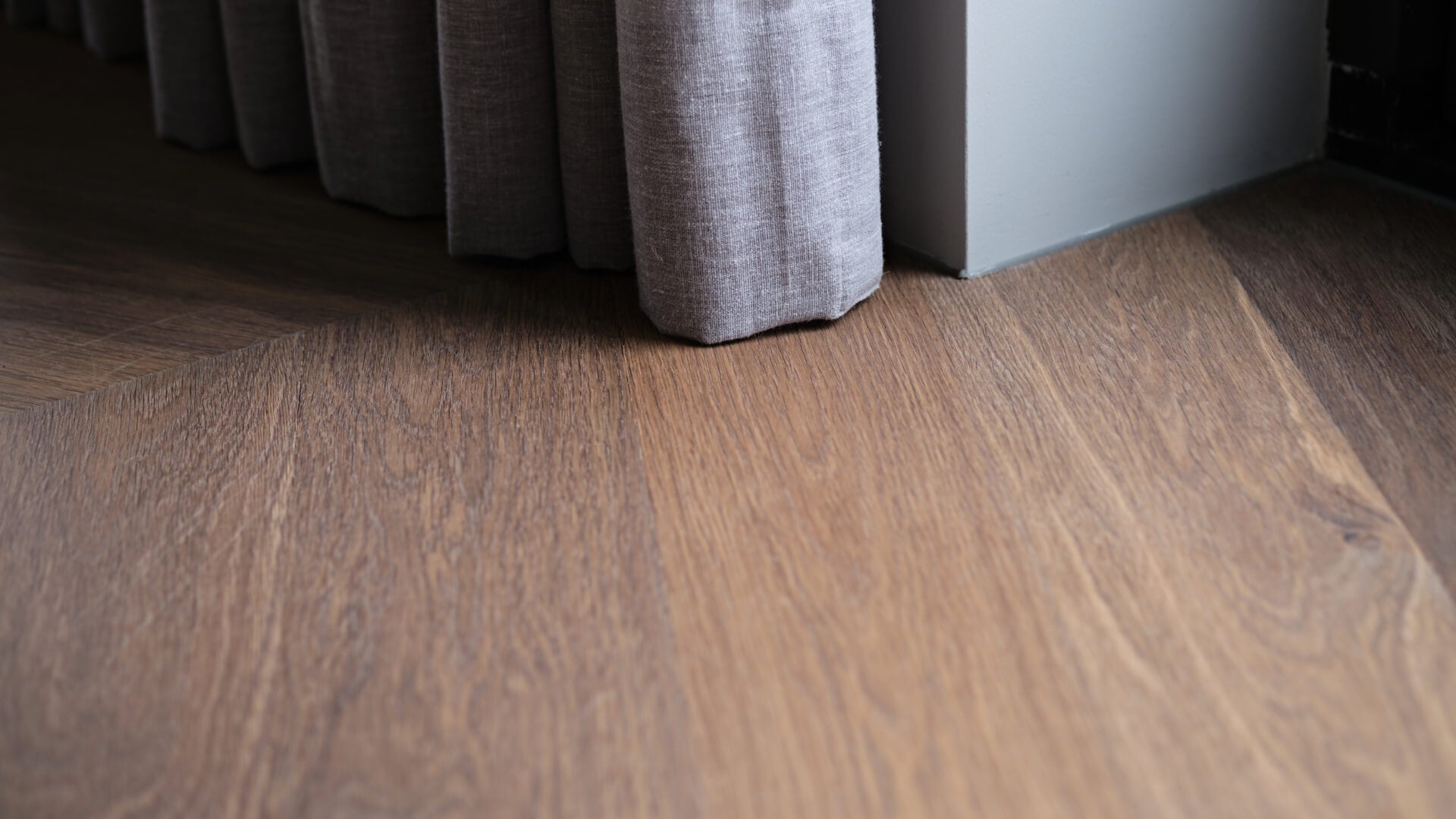
Bezoek de showroom
Once the pipes have been installed, they can be connected to the distribution station, which can be connected to the inlet and outlet of the heating boiler. A sand-cement screed is poured over the pipes on the metal grid.
The sand-cement screed must meet a D20 standard. This is important so that the skin tensile strength is high enough for the new wooden floor, so that it is able to withstand the effects of the wood. > do not pull off the sand-cement floor. It is important that the sand-cement screed floor is finished with a flatness class 2. This means that the floor may have a slope of 4 mm over a distance of 2 meters. The floor does not have to be level, but it does have to be flat. The minimum height required between the pipes and the top of the sand-cement screed is 30mm. This is necessary to obtain a minimum flat distribution of the heat to the surface.
The sand-cement screed must dry for at least 28 days before the underfloor heating can be switched on. If the drying time is unclear, you can use an average of approximately 1 week drying time per applied height of 1 cm. So with a 5 cm screed, approximately 5 weeks of drying time should be allowed. During the drying period, the screed floor can be walked on, but is not yet strong enough to withstand mechanical loads.
-
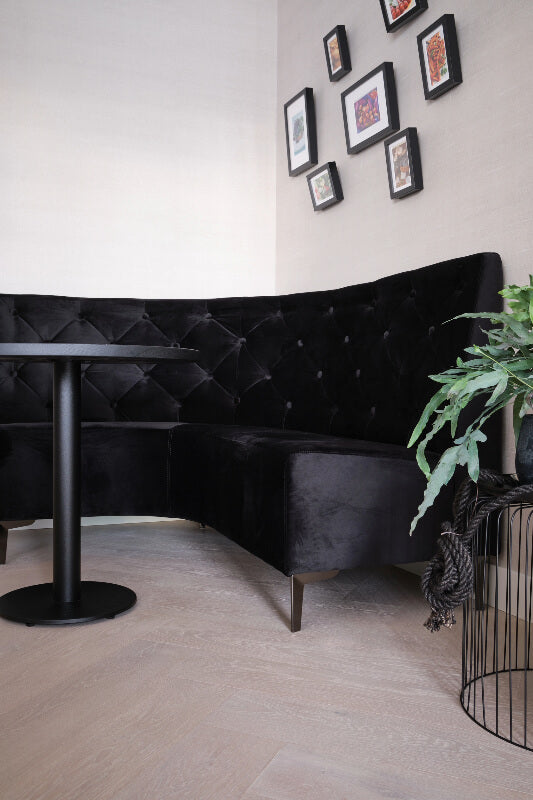
-
Speed up the drying time
There are options to speed up the drying time. This can be achieved by applying a drying accelerator, such as DURAMIT, to the sand-cement screed before it is poured. The drying time accelerator strengthens the mechanical properties of the sand-cement screed and can reduce the drying time described above by half. In many cases, heating the floor can start after 10-14 days.
On the other hand, a drying time accelerator requires an additional investment compared to the sand-cement floor in which a drying time accelerator has not been incorporated.
Magazine Vol inspiratie
Magazine aanvragen-
What should be done after the drying process
After the drying period, the underfloor heating may be turned on and it is important that the start-up protocol is completed. By going through the start-up protocol, the screed will 'settle' and ensures that the sand-cement screed shows an effect; it will expand and contract, something that is important to do before the wooden floor can be installed, because you do not want this effect to react to the new wooden floor. An additional advantage of going through the start-up protocol is that any residual moisture that may still be in the sand-cement screed evaporates.
The heating protocol takes approximately 10-14 days. This starts at a water temperature of 20 - 25 degrees. The water temperature is increased by 5 degrees every day. Continue this until the maximum water temperature of the system is reached. Leave the system at the maximum temperature for a number of days. The number of days corresponds to the thickness of the sand-cement screed, with a thickness of 5 cm, use 5 days for the maximum temperature.
The moisture measurement can take place after completing the start-up protocol. When the moisture measurement is below 1.5%, the sand-cement screed is ready for installing the wooden floor.
-
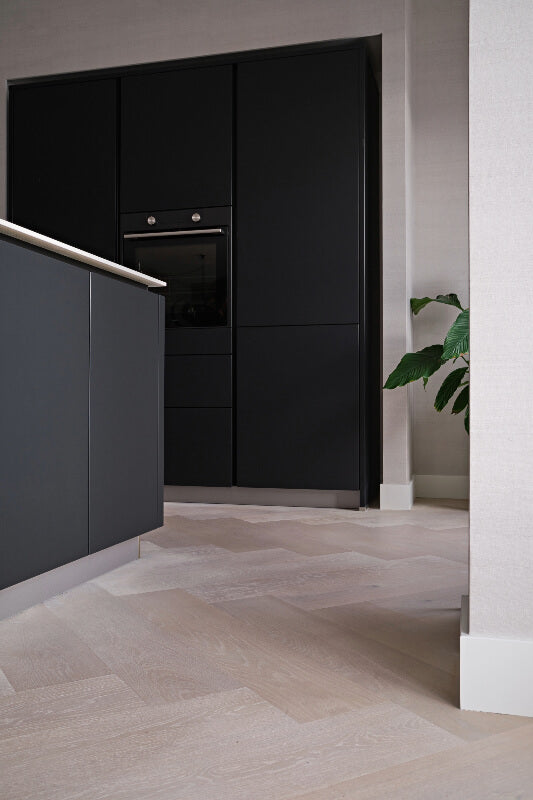
Costs of new screed with underfloor heating
For the cost indication we have assumed an example of 50 square meters:
- For pouring a sand-cement screed floor with finishing, you must take into account a cost forecast from €30/m2 incl. VAT.
The application of a drying time accelerator costs approximately €30/m2 incl. VAT. - The investment for installing the underfloor heating on a grid, installing the pipes, installing the distribution station and connecting the pipes to the distribution station amounts to an investment of approximately €2500 for a space of 50 m2. ,- incl VAT.
- Installing the wooden floor depends on the pattern, which varies from € 126 to € 250.
-
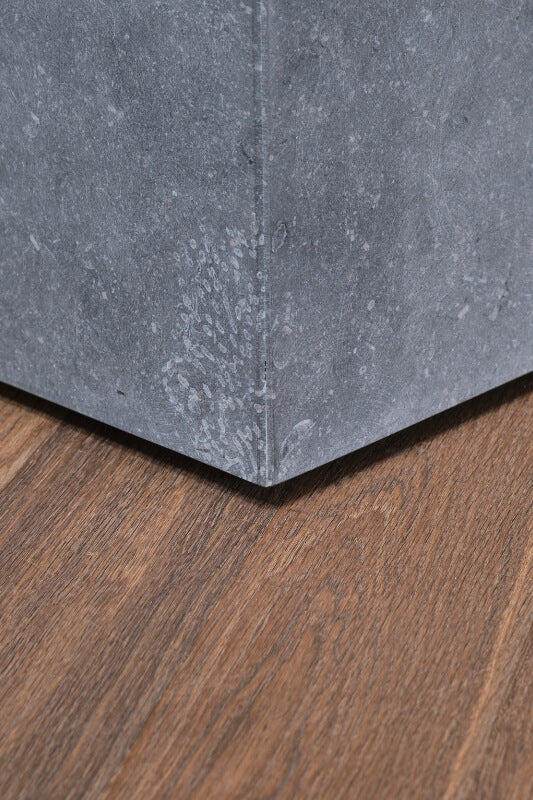
-
Project lead time
The entire project from removing the existing floor to installing underfloor heating and replacing furniture takes approximately 7 - 21 days (based on 50 m2).
The following distribution can be maintained:
- Remove existing floor in approx. 1 day.
- Milling and installing the underfloor heating takes approximately 1 day. (provided preparations have been made)
- Installing the wooden floor, including the treatment, approximately 3 days. After this, the floor must dry for 2 days.
Bezoek de showroom
Lead time for a new screed floor
- Pouring the sand-cement screed without drying accelerator until installation of the wooden floor takes approximately 6-8 weeks.
- This depends on the thickness of the screed. Installing the insulation, grid and pipes takes approximately 1 day.
- Pouring the floor takes 1 day, after which the floor must dry. After 28 days, the 10-14 day heating protocol can be started.
- Once the floor is dry enough we can install the wooden floor. This can take approximately 3 days. After 3 days, the floor must dry for 2 days.
Points of attention
- Sand cement screed must meet the D20 standard regarding skin tensile strength
- The sand-cement screed must comply with flatness class 2.
- Residual moisture percentage of maximum in combination with underfloor heating 1.8%
- Drying time of at least 28 days before the underfloor heating can be switched on
- 1 week drying time per 1 cm layer thickness of screed
- With a drying time accelerator, the drying time can be halved
- A supply and discharge from the heating boiler must be prepared at the position of the distribution station.
- There must also be a power point at this location.
- If necessary Uipkes Wood Flooring can provide a plumber who will take care of preparatory work.
Want to have a new screed installed with underfloor heating ?
Do you have a project where a new screed floor with underfloor heating needs to be installed? We also offer the installation of underfloor heating in a new screed floor as a separate service, without purchasing a new wooden floor from Uipkes. Come visit the showroom and discuss the possibilities!
Frequently Asked Questions
Can Uipkes Wood Flooring help with installing underfloor heating in a new screed floor?
Yes, Uipkes has experience in installing underfloor heating in combination with a new sand-cement screed. We can take care of the entire process, including installing the underfloor heating and pouring the screed. This means that all work is carried out by one party with one point of contact and the planning of the work can be properly coordinated.
What is the structure of a sand-cement screed with underfloor heating ?
When installing underfloor heating on a new screed floor, insulation plates are placed on the foundation to prevent heat loss. A metal grid is then placed to which the underfloor heating pipes are attached. These pipes are placed in a hairpin or snail shell shape. After installing the pipes, a sand-cement screed is poured over the pipes.
Which standards must the sand-cement screed meet?
The sand-cement screed must meet the D20 standard, which means that the skin tensile strength is high enough to firmly support the new wooden floor. In addition, the screed floor must be leveled with a flatness class 2, which means that the floor may have a slope of a maximum of 4 mm over a distance of 2 meters.
How long does the drying process of the sand-cement screed take?
The sand-cement screed must dry for at least 28 days before the underfloor heating can be switched on.
What is the start-up protocol for the underfloor heating after the drying process?
The start-up protocol takes approximately 10-14 days. It starts by heating the water to 20-25 degrees Celsius. The water temperature is then increased by 5 degrees every day until the maximum temperature is reached. The maximum temperature is maintained for a number of days, which corresponds to the thickness of the sand-cement screed. After completing the start-up protocol, a moisture measurement can be carried out.
- Choosing a selection results in a full page refresh.
- Opens in a new window.



